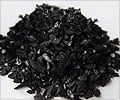Organizers of Sunday’s Super Bowl, a much awaited US football event, say they would go all out to reduce waste and make the game as green as possible.
From planting 10,000 new trees in Arizona to donating thousands of pounds of leftover food to soup kitchens and shelters, the NFL Environmental Program is walking the extra mile to demonstrate its contain its environmental concerns.Jack Groh, the program's director, acknowledges that the league isn't making up for its entire environmental impact. But, he said the National Football League (NFL) was doing a little bit more each year and that this Sunday's Super Bowl will be the greenest yet.
Organizers of massive events worldwide, including the 2008 Olympics in Beijing, the Winter X Games in Colorado, soccer's World Cup, the Indianapolis 500, the Sundance Film Festival and the Academy Awards, are all working to reduce their carbon footprint.
Groh said the NFL's environmental program had been in place for 15 years and started simply with recycling.
It has evolved to include food donation, using renewable energy and energy-efficient vehicles, and planting new trees to offset the game's carbon output.
Renewable energy sources, including wind power, geothermal, low-impact hydro and landfill gas -- will power the University of Phoenix Stadium in Glendale, Arizona, on game day. They were also used to power the adjacent NFL Experience street party for the five days leading up to the game.
Advertisement
Another environmental program includes planting 10,000 new trees on 100 acres of eastern Arizona land burned in 2002 by the largest wildfire in state history. The fire charred 469,000 acres and destroyed 491 homes.
Advertisement
That may seem like a low number, but Payne said those trees wouldn't have been planted otherwise because of funding issues and wouldn't have grown back on their own because of severe and widespread damage to the land.
And this year for the first time, Groh said the NFL partnered with travel Web site Expedia.com and San Francisco-based TerraPass Inc. to use "carbon offsets" to make up for the 571 tons of greenhouse gas created by the air travel of the New York Giants, the New England Patriots and the NFL staff.
Groh said the NFL wasn't claiming that these efforts totally offset the Super Bowl.
"When we talk about all these tree plantings, are 10,000 trees enough to absorb the carbon dioxide from all of our events? I'm not even going to make that determination," he said. "But here's what we decided about this. We're going to go ahead and do what we're going to do anyway, and if we wait for all the arguments about how many trees to plant and how valid is this and how valid is that, you know, we might be talking about Super Bowl 52 instead of 42."
Many greenhouse gases occur naturally, such as water vapor, carbon dioxide, methane, nitrous oxide, and ozone. Others such as hydrofluorocarbons (HFCs), perfluorocarbons (PFCs), and sulfur hexafluoride (SF6) result exclusively from human industrial processes. Carbon dioxide is released into the atmosphere by the burning of solid waste, wood and wood products, and fossil fuels (oil, natural gas, and coal).
Nitrous oxide emissions occur during various agricultural and industrial processes, and when solid waste or fossil fuels are burned.
Methane is emitted when organic waste decomposes, whether in landfills or in connection with livestock farming.
Methane emissions also occur during the production and transport of fossil fuels.
When sunlight strikes the Earth’s surface, some of it is reflected back towards space as infrared radiation (heat). The greenhouse gases mentioned above absorb this infrared radiation, trap the heat in the atmosphere and reemit the waves downward causing the temperature of the earth to go up.
And this is called the "greenhouse effect," because of a similar effect produced by the glass panes of a greenhouse, where plants are grown under controlled conditions.
Emissions of two greenhouse gases, methane and carbon dioxide have reached record high, says World Meteorological Organization, an agency of the United Nations.
Mark Bain, former director of the Center for the Environment at Cornell University and an ecology professor, said determining the full scope of the Super Bowl's impact was complicated, so assessing how effective the NFL's efforts to offset it was tricky.
"It's very hard to say what is part of the game and what's not," he said. "How do you put a circle around it?"
Bain referred to pinning down the number of fans flying to and from Arizona for the game and their hotel stays, and deciding whether to factor in the weeks of preparation beforehand and all the cleanup afterward.
Groh said the NFL, with help from the Environmental Protection Agency, the Forest Service and Princeton University researchers, estimated four years ago that the Super Bowl created 500 tons of greenhouse gas. That number includes the ground transportation of NFL officials, but excludes hotel stays and air and ground travel for fans and teams.
Groh said the figure was too small and that the environmental program is working to come up with a better estimate that factors in more aspects of the game, CNN reports.
Jim Holway, associate director of the Global Institute for Sustainability at Arizona State University, said what Super Bowl officials are trying to do is meaningful.
"It's encouraging to see it's getting this kind of attention," he said. "Awareness is what it's all about at this point ... a year or two ago the mainstream wouldn't have even thought about carbon impact."
Source-Medindia
GPL






